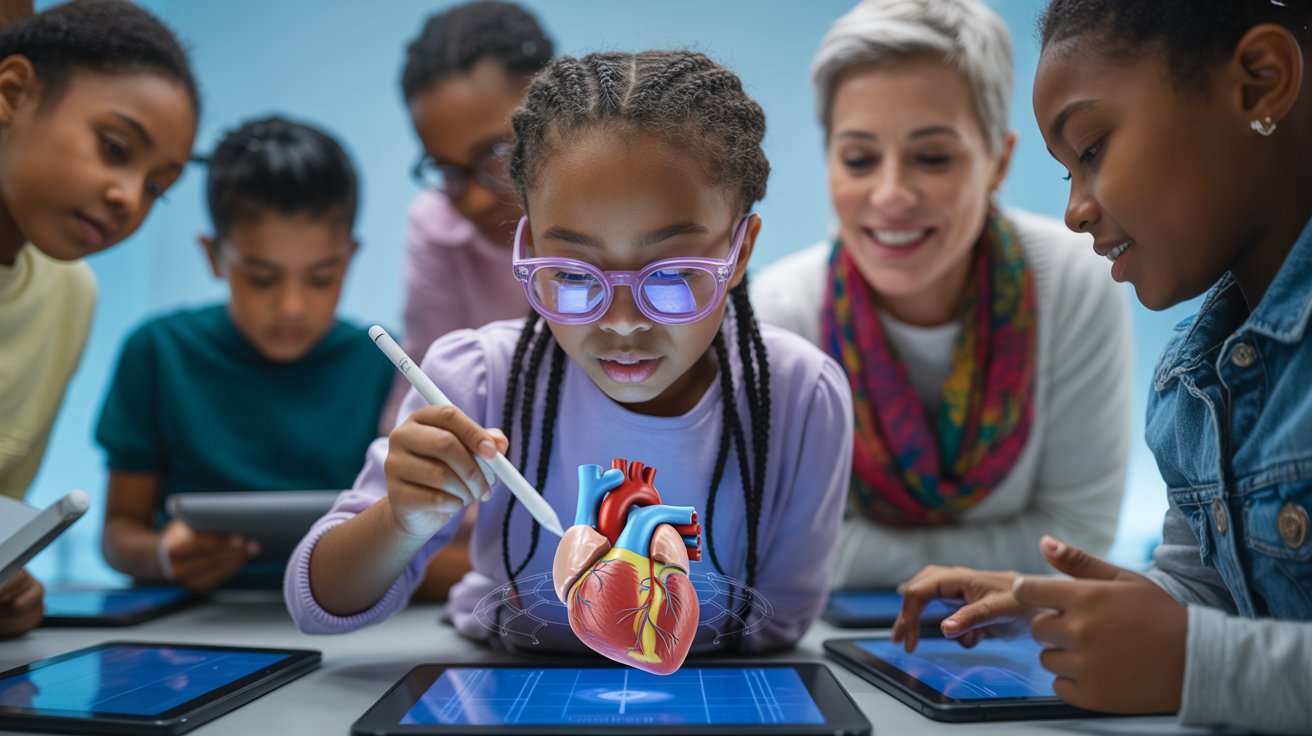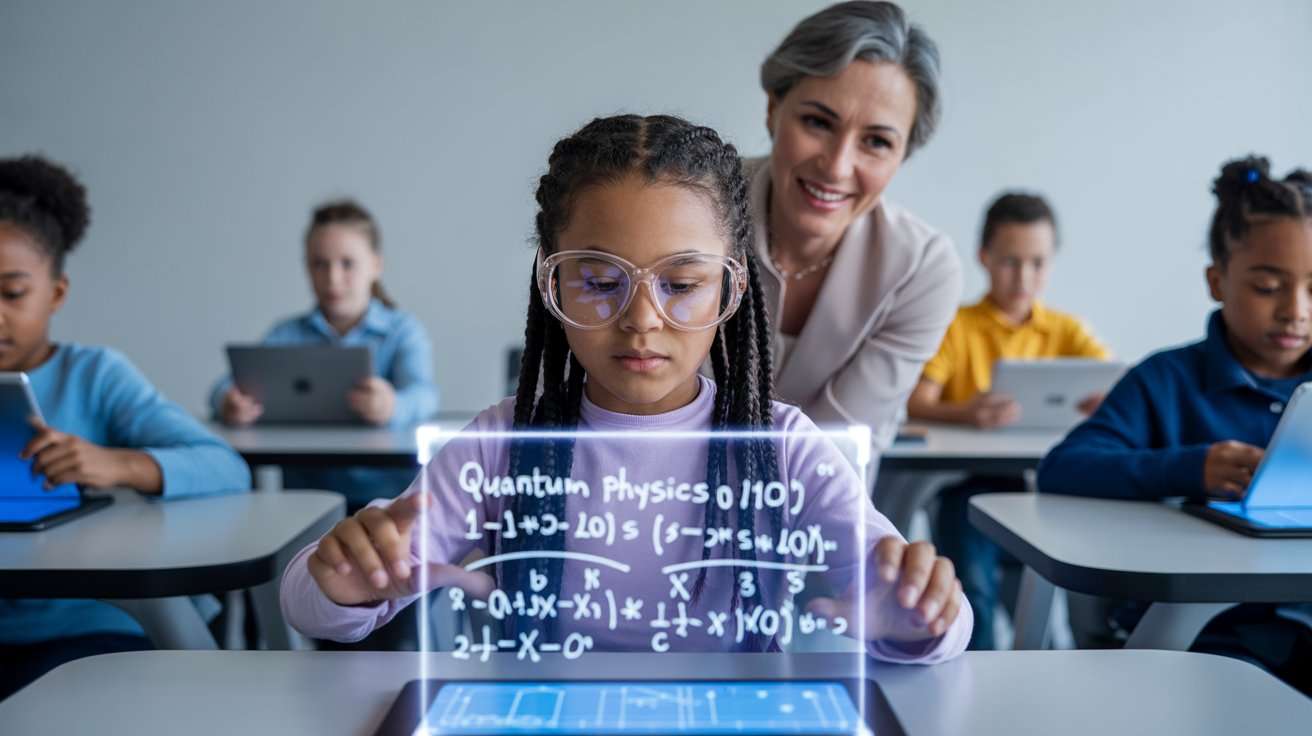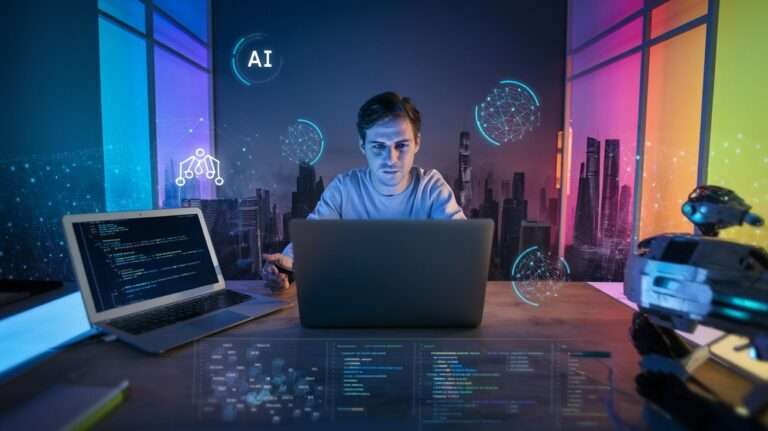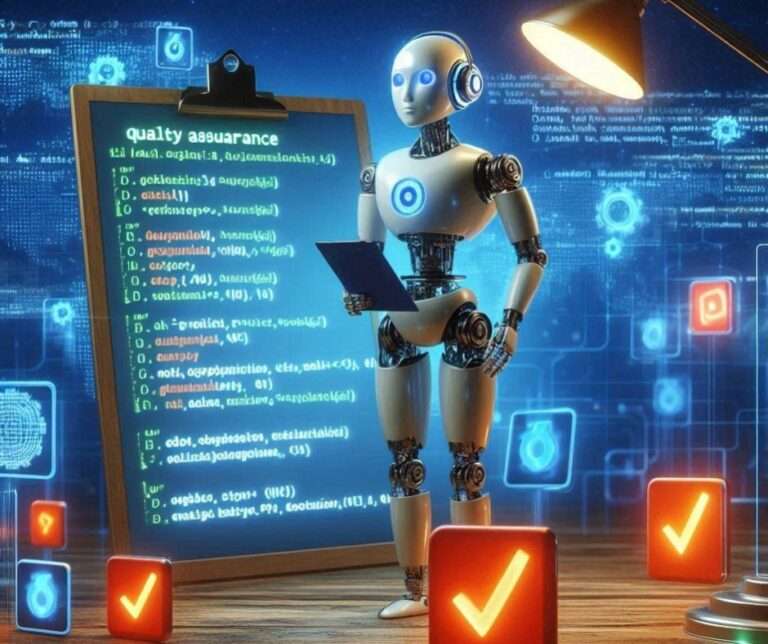How Digital Transformation in Education Boosts Success
Digital Transformation in Education: A Game-Changing Shift.
The education landscape is undergoing a seismic shift, driven by digital transformation. Over 70% of educators believe technology significantly boosts student performance, according to a 2024 survey.
From AI-powered personalised learning to virtual classrooms, this revolution is redefining how students learn and teachers teach, making education more engaging, accessible, and tailored to individual needs.
Edtech innovations keep coming, and online learning platforms are getting more popular. This makes good education available to students everywhere.

The education industry disruption from digital change is more than just tech. It’s about making learning better and more for everyone.
Key Takeaways
- Edtech innovations are changing education.
- Online learning platforms make education more accessible.
- Digital transformation makes learning more inclusive.
- Technology trends are shaping education’s future.
- The education world is going through big changes.
My Vision for Transforming Indian Education
I dream of an Indian education system where digital transformation lights up every classroom. The traditional rote-learning approach has its strengths, like discipline, but it often stifles creativity and leaves students unprepared for a fast-changing world.
Imagine a young girl in a rural school, her eyes sparkling as she explores science through interactive apps, or a boy mastering coding via a tablet, dreaming of becoming a tech innovator.
Digital tools can make learning engaging, personalized, and accessible, bridging gaps in resources and opportunities. By blending technology with passionate teaching, we can inspire India’s youth to learn, grow, and shape a brighter future.
My Educational Background and Experiences
I’ve learned in both old-school classrooms and by myself. I’ve seen the ups and downs of traditional teaching.
Limitations I Encountered in Traditional Learning
Growing up, I often felt lost in the rigid structure of traditional classrooms. The biggest hurdle was the lack of personal attention—teachers, stretched thin, couldn’t tailor lessons to each student’s needs. Everyone got the same one-size-fits-all education, which left some kids bored and others struggling to keep up.
I remember a friend who loved art but floundered in math, yet the system didn’t adapt to her strengths or pace. This cookie-cutter approach dulled curiosity and ignored unique learning styles.
Embracing digital tools could have sparked her interest, offering personalised lessons that made learning feel like an exciting, individual journey.
Why I’m Passionate About Educational Innovation
I love new ways of learning because they can fix old problems. Technology can make learning more fun, open, and helpful for everyone.
| Traditional Learning | Digital Transformation |
|---|---|
| One-size-fits-all approach | Personalized learning experiences |
| Limited access to resources | Access to a vast array of digital resources |
| Static curriculum | Dynamic and adaptive curriculum |
With digital change, we can make Indian education better. It will be more fitting, easy to get to, and work well for today’s world.
The Current Educational Landscape in India
Looking back at my time in Indian schools, I see a big gap. Old teaching ways don’t match today’s learning needs. This is a big worry.
Traditional Teaching Methods Still Dominating Classrooms
The chalk-and-talk approach has been key in Indian schools for years. But, it clashes with today’s tech-savvy students.
The Chalk-and-Talk Approach vs. Modern Learning Needs
The old chalk-and-talk teaching method, while nostalgic, feels like a dusty relic compared to today’s vibrant, tech-driven learning. Digital tools bring lessons to life, turning tricky subjects like math or science into engaging adventures.
Picture a student struggling with fractions, then lighting up as an interactive app breaks it down with colorful visuals and games. These tools spark curiosity and make learning fun, not a chore. Unlike rigid lectures, technology adapts to each student’s pace, fostering confidence and creativity.
By embracing digital transformation, we’re not just teaching—we’re inspiring kids to love learning in a way that sticks.

Top Online Courses to Advance Your Career
Digital Learning & Transformation of Education
6 Career Challenges Faced by Fresh Graduates
The Growing Disconnect Between Education and Industry Requirements
There’s a big worry about what schools teach versus what jobs need. New grads often struggle to meet employer expectations.
Skills Gap I’ve Observed in Recent Graduates
Many new graduates lack the skills employers want. This shows we need to change how we teach to meet job needs.
Many recent graduates lack the practical skills employers seek, revealing a disconnect between academia and industry needs. While universities teach theory, they often neglect skills like critical thinking, collaboration, and proficiency with tools like data analysis or project management software. Employers value adaptability and initiative, yet these are rarely prioritized in traditional curricula.
To bridge this gap, education must evolve. Integrating internships, real-world projects, and training in emotional intelligence and technical skills can better prepare students for today’s job market. Hiring managers consistently note that graduates with practical experience stand out. Aligning education with industry demands will empower graduates to succeed and drive economic growth.

Digital Transformation in Education: A Human-Centred Shift
Digital transformation in education goes beyond adding tech to classrooms—it’s a reimagining of learning. By integrating AI, virtual classrooms, and data analytics, it personalises education, making it accessible and engaging. Students in remote areas can access top courses, while teachers use tools to track progress and focus on mentorship.
A 2024 study showed 20% higher engagement in schools using AI platforms. This shift empowers students to unlock potential, helps teachers rediscover their passion, and prepares graduates for a digital world. Addressing digital divides and teacher training is key to equitable access. Education becomes a vibrant, lifelong journey.
What Digital Transformation Means for Indian Schools and Universities
In India, digital transformation means using tech in all parts of education. It changes the buildings, what we learn, how we teach, and how we test.
Beyond Computers: Creating a Technology-Integrated Learning Ecosystem
Building a tech-friendly classroom isn’t just about tossing in a few computers—it’s about weaving technology into the heart of learning to make it joyful and effective.
Imagine a student, shy but curious, diving into a virtual science lab that brings experiments to life, or a group of kids giggling as they collaborate on a digital storytelling project.
Technology, from interactive apps to AI tutors, can adapt to each child’s pace, sparking excitement and confidence. It’s about creating a warm, inclusive space where tech enhances creativity and connection, transforming education into an adventure that inspires every learner.
Key Components Driving Educational Revolution
The big changes in education come from a few main areas. These are the buildings, what we learn, how we teach, and how we test.
Infrastructure, Content, Pedagogy, and Assessment Transformation
| Component | Traditional Approach | Transformed Approach |
|---|---|---|
| Infrastructure | Classrooms with blackboards | Smart classrooms with digital boards |
| Content | Textbook-based | Digital content with multimedia resources |
| Pedagogy | Lecture-based | Interactive and personalized learning |
| Assessment | Pen-and-paper exams | Online assessments with real-time feedback |
By changing these areas, Indian education can use edtech innovations and online learning platforms. This makes learning better and more for everyone.
How COVID-19 Accelerated Educational Technology Adoption
The COVID-19 pandemic changed education fast. Schools closed, and online learning became the new norm. This showed both the good and bad sides of using technology in schools.
My Observations During the Pandemic’s Educational Disruption
I saw a big jump in digital tools for school during the pandemic. Teachers and students learned new tech, often with little help.
From Crisis Response to Innovative Solutions
At first, schools focused on getting through the crisis. But soon, teachers started to find new ways to teach. This change from just surviving to finding new ways was a big lesson.
Valuable Lessons from Emergency Remote Teaching
Learning online during the pandemic taught us a lot. We learned about being flexible, making learning easy to get to, and keeping students interested.
What Worked and What Failed in India’s Pandemic Education Response
India’s schools tried to keep learning going during the pandemic. Some used tech well, but others faced big problems. We learned that good tech and fair access are key.
The pandemic made educational technology trends grow fast. It led to a mix of online and in-person learning. Now, we need to use what we learned to make education better for everyone.
- Emphasis on digital literacy
- Investment in robust digital infrastructure
- Development of hybrid learning models

Groundbreaking EdTech Innovations Reshaping Indian Classrooms
New EdTech tools are changing Indian schools. They help students and teachers in big ways. Using technology in school is key for today’s students.
Artificial Intelligence Creating Personalised Learning Journeys
Artificial Intelligence (AI) is revolutionising education, crafting unique learning paths that feel like a warm hug tailored to each student’s needs. Unlike one-size-fits-all lessons, AI assesses how a student learns—their strengths, struggles, and pace—and adapts content in real time.
Imagine Priya, a shy fifth-grader, gaining confidence as an AI platform adjusts math problems to match her progress, making fractions feel like a fun puzzle. Or Rohan, who loves history but struggles with dates, getting customized quizzes that make learning stick.
A 2024 study showed AI-driven tools boosted student performance by 25% by personalising lessons.
AI Applications I’ve Seen Transform Student Engagement
I’ve watched AI spark joy in classrooms. AI chatbots, like virtual study buddies, answer questions instantly, guiding students through tricky concepts like algebra or grammar. For instance, when my student Anika was stumped by science terms, an AI tutor patiently explained them with examples she loved, like relating ecosystems to her favorite park.
Tools like these, from platforms like Duolingo or Google’s AI tutors, keep kids engaged, turning learning into an exciting journey. By offering instant feedback and tailored support, AI makes education feel personal, encouraging every student to shine.
VR and AR: Bringing Learning to Life
Virtual and Augmented Reality (VR/AR) make tough concepts fun and clear. Picture Arjun, a Mumbai student, exploring Egypt’s pyramids through a VR headset, or Priya grasping biology by interacting with a 3D heart in AR. These tools turn abstract ideas into vivid experiences, boosting retention by 30%, per a 2024 study. They let kids explore places and ideas they’d never see otherwise, sparking joy and curiosity.
Immersive Learning That Sticks
VR/AR simplify complex topics. Anika “dissected” a virtual frog, making anatomy click in a way books couldn’t. These immersive tools help students visualize and remember, transforming learning into an adventure.
Gamification: Learning as Play
Gamification makes school exciting. Apps like Kahoot! turn quizzes into games, with kids like Rohan cheering as they earn points in history. A 2025 study shows gamification boosts engagement by 20%, keeping students eager to learn.
In short, AI, VR/AR, and gamification are changing Indian schools. They make learning fun and get students ready for the future.
Online Learning Platforms Democratizing Education Access
Online learning platforms are changing education in India. They make learning better for everyone. Now, students can get top-notch education online.

Indian EdTech Platforms Making Quality Education Accessible
Indian EdTech has made learning better for all. Sites like BYJU’S, Unacademy, and Vedantu are changing how we learn. They offer fun and interactive lessons.
Success Stories from BYJU’S, Unacademy, and Vedantu
These sites have grown fast. BYJU’S is now a top EdTech company worldwide. Unacademy has changed how we prepare for tests. Vedantu offers live online tutoring.
| Platform | Key Features | Impact |
|---|---|---|
| BYJU’S | Personalised learning experiences | Improved student engagement |
| Unacademy | Live classes, test preparation | Enhanced test scores |
| Vedantu | Live online tutoring, interactive sessions | Personalized learning experiences |
How Global Learning Resources Are Empowering Indian Students
Global learning resources are opening new worlds for Indian students, far beyond the pages of their textbooks. Platforms like Khan Academy or Coursera bring diverse, high-quality content, letting kids explore subjects like coding or astronomy at their own pace.
Picture Priya, a teenager from a small town, mastering Python through free online tutorials, dreaming of becoming a software engineer. Or Arjun, who discovers history through interactive BBC videos, sparking a love for storytelling.
These tools break barriers, offering affordable, engaging education that fuels curiosity and confidence, empowering students to chase big dreams no matter where they live.
My Experience Utilising International Platforms for Local Educational Needs
I’ve witnessed firsthand how global platforms can transform local education, making it vibrant and inclusive. When I introduced Khan Academy to my students in a small Indian town, their eyes lit up learning math through interactive videos tailored to their pace.
Platforms like Coursera offered Riya, a curious student, free courses on AI, sparking her dream to innovate. These resources break barriers, bringing world-class content to underserved areas.
By blending global tools with local needs, we create a richer, more equitable education, empowering kids to explore beyond textbooks and chase their passions with confidence.
My Strategies for Bridging the Digital Divide in Indian Education
I want to change Indian education by fixing the digital divide. We need to work together and use community-based solutions and partnerships. This will help fix the difference in technology access between cities and villages.
Addressing Urban-Rural Technology Access Disparities
The difference in technology access between cities and villages is big. Community-based initiatives can help by giving solutions that fit rural needs.
Community-Based Solutions I’ve Supported
I helped start community centers with digital tools. These centers give rural students access to good educational resources. They also teach digital skills.
Initiatives to Improve Digital Infrastructure in Underserved Areas
We need to work together to improve digital tools in places that don’t have them. Public-private partnerships are key. They bring together resources and skills from both sides.
Public-Private Partnerships Making a Difference
Working together, we can make digital projects last. For example, making internet and digital tools affordable for rural students can really help their learning.

The Government’s Role in Accelerating Digital Transformation in Schools
Digital transformation in Indian schools needs a big plan. The government is key in making education better. They help change the education system for the future.
Evaluating Current Policies and Programs
The Indian government has started many plans for digital education. Digital India and the National Education Policy 2020 are big steps. They aim to make education digital and strong.
Digital India and National Education Policy 2020 Impact
The Digital India plan wants to better digital tools. The National Education Policy 2020 wants to change education. Together, they can really help schools go digital.
My Heartfelt Recommendations for Education Policy
I believe every kid deserves a fair shot at a great education, and the government can make that happen with caring, forward-thinking policies. Here’s what I’d love to see:
- Close the Digital Gap: Picture a kid in a small village, eager to learn but stuck without internet. Let’s fund reliable Wi-Fi and laptops for families who need them most. A 2024 study showed 30% of rural students miss out due to poor connectivity—let’s change that.
- Empower Our Teachers: Teachers like my friend Ms. Sharma transformed her classroom with digital tools after just one training session. Let’s give every teacher that chance with ongoing workshops to spark creativity and confidence.
- Create Lessons for Everyone: Imagine a blind student beaming as they follow an audio lesson designed just for them. Policies should fund diverse, accessible content so every child feels included.
- Team Up with Tech Experts: Partnering with companies like Google can bring cool tools to schools, like it did for 10 million kids worldwide.
- Keep Listening and Improving: Talk to teachers, parents, and kids to keep policies fresh and fair. Together, we can make learning a joyful, equal opportunity for all.
Areas Where Government Support Is Critically Needed
Government support is vital to transform education through digitalization while ensuring equity. By funding accessible digital tools, like laptops and high-speed internet, governments can bridge the digital divide for underserved communities.
Teacher training programs are equally crucial, equipping educators with skills to integrate technology effectively, from using learning platforms to teaching digital citizenship. Additionally, supporting the creation of inclusive, high-quality digital content ensures all students, regardless of background, engage meaningfully.
For instance, a rural student accessing interactive math lessons online can spark a love for learning. With these efforts, governments can make education fair, modern, and inspiring for everyone.
Cultivating Digital Literacy Among Students and Educators
In today’s world, knowing how to use digital tools is key. It’s not just about having a computer. It’s about knowing how to use it well.
Essential Digital Skills Every Student Needs
Digital literacy means knowing how to use computers and the internet. Students need to know how to find and check information online. They also need to know how to stay safe online.
Beyond Basic Computer Knowledge to Digital Citizenship
Digital citizenship goes beyond online safety—it’s about making a positive impact in the digital world. It involves teaching students to navigate technology responsibly, respect others online, and create meaningful content. Teachers are pivotal in fostering these skills, guiding students to think critically about their digital footprint, from posting thoughtfully to combating misinformation.
For example, a teacher might use real-world scenarios to show how a kind comment can uplift a community. By embedding empathy, ethics, and accountability into lessons, educators empower students to thrive as digital citizens, leaving a legacy of positivity online.
Teacher Training Programs for the Digital Age
Teachers need to know how to use digital tools too. Teacher training programs help them use technology in class. This makes learning better for everyone.
How I’m Contributing to Educator Preparedness
I help with teacher training to improve digital skills. By teaching teachers, we help students learn better. This makes a more tech-savvy future.
Creating Effective Hybrid Education Models for Post-COVID India
India is moving forward after COVID. The future of learning will mix face-to-face and online classes. This mix is not just needed but also a chance to change education.
My Approach to Balancing In-Person and Online Learning
I think a good mix of both is key. Edtech innovations help make this balance work.
Designing Complementary Physical and Virtual Experiences
It’s important to make learning experiences that go well together. For example, online labs can make classroom learning better.
Building Engaging Hybrid Learning Environments
Keeping students interested is crucial. Using interactive technologies and teamwork tools helps make learning fun and motivating.
Technology Tools That Enable Seamless Transitions
| Tool | Functionality | Benefit |
|---|---|---|
| Learning Management Systems (LMS) | Manages course content and tracks student progress | Streamlines educational processes |
| Virtual Classroom Software | Facilitates real-time online classes | Enhances flexibility and accessibility |
| Interactive Whiteboards | Enables interactive lessons in physical classrooms | Increases student engagement |
Navigating Challenges in Educational Technology Implementation
Using technology in schools is key for India’s future. We must face the challenges that come with it.
Addressing Data Privacy and Security Concerns
More tech in schools means big worries about data privacy and security. We need strong rules to keep info safe.
Ethical Frameworks I Advocate For
I think we should use rules that value openness, agreement, and less data. This way, we protect our students’ info.
Ensuring Equitable Access to Educational Technology
The digital divide is a big problem. It makes education unfair for some. We must make sure everyone gets to use tech in school.
Maintaining Human Connection in an Increasingly Digital Classroom
We must keep human connection alive in school. Using tech wisely and keeping talks alive makes learning better.
Conclusion: Embracing the Future of Indian Education
Digital transformation is changing Indian education for the better. It makes learning more inclusive and effective. This change is exciting.
Online learning platforms are making education available to more people. Artificial intelligence and virtual reality make learning fun and personal. This is a big step forward.
We need to keep improving education with digital tools. But, we must also solve problems like keeping data safe. This ensures everyone can use educational technology.
I’m hopeful for the future of Indian education. It will lead the world with its focus on innovation and quality. Together, we can make sure every student gets great education. This will help them succeed in our complex world.
FAQ
What is digital transformation in education?
Digital transformation in education means using technology to make learning better. It makes learning fun and easy to get to. It changes how we teach and learn, using new tech and online tools.
How can edtech innovations improve the Indian education system?
New tech like AI and virtual reality can change how we learn. It makes learning fun and helps students learn better. Teachers can make learning fit each student’s needs.
What role do online learning platforms play in digital transformation?
Online learning platforms are key in digital transformation. They give students great learning resources. They make learning easy and help students learn about tech.
How can we bridge the digital divide in Indian education?
We need to tackle the gap in tech access. Helping communities and working with private groups can help. This way, everyone can get the chance to learn.
What is the government’s role in facilitating digital transformation in schools?
The government helps by making policies and programs. Programs like Digital India are good starts. But, we need more support to make sure everyone benefits.
Why is digital literacy important in the education sector?
Digital literacy is key for using tech well. It’s not just about knowing computers. It’s about being smart online. Teachers need training to help students.
How can we create effective hybrid education models?
We need to mix online and in-person learning. This makes learning fun and effective. Using tech, we can make learning better for everyone.
What are the challenges associated with implementing educational technology?
Using tech in schools can be tough. We face issues like keeping data safe and making sure everyone has access. But, with the right approach, we can overcome these challenges.
How can digital transformation make education more inclusive?
Digital transformation can make learning better for everyone. It gives access to great resources and helps students learn in their own way. With new tech, we can make learning more inclusive and effective.







